2. Complete Activity 8.2 (Page 83). Take a fresh potato. Observe the scars on it with the help of a magnifying glass. You may find bud(s) in them. These scars are also called “eyes”. Cut the potato into small portions, each of an eye and bury them in the soil. Water the pieces regularly for a few days and observe their progress. What do you find? Likewise you can also grow ginger or turmeric.
Answer:
We carry out the activity using potato, ginger or turmeric.
Potato
The Activity 8.2 for potato plant should be carried out in the following way:
Aim: To observe if new potato plants can be grown from the “eyes” of a parent potato tuber.
Materials Required: Potato tuber, soil, water.
Procedure:
(i) Take a fresh potato tuber with an enough number of scars or “eyes” as shown in the figure.
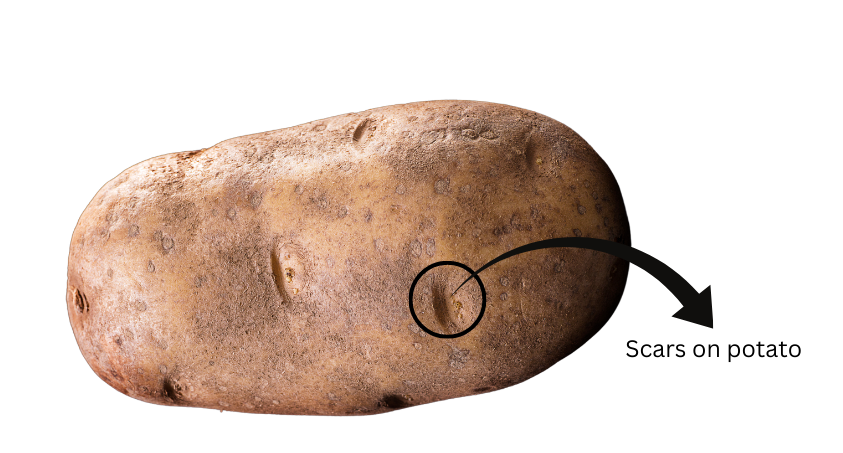
(ii) Cut the potato tuber into small portions taking care that each portion contains an eye.
(iii) Callous the cut portions of the potato by letting it dry for a couple of days to prevent rotting.
(iv) Bury them in the soil, water the pieces regularly for a few days and observe what happens.
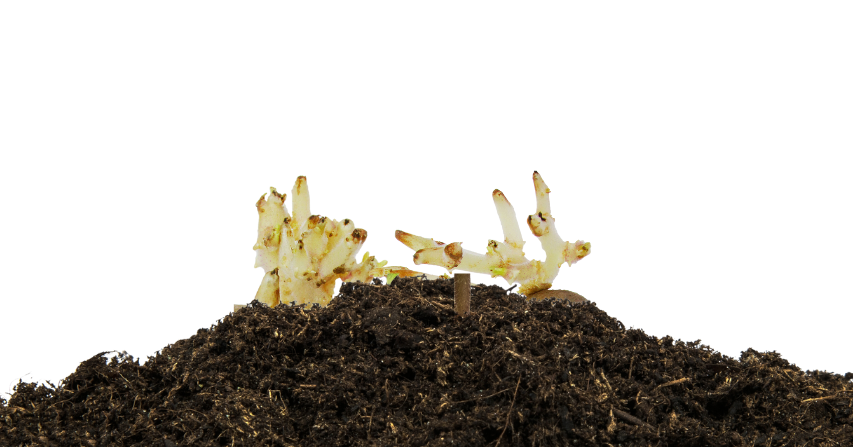
Observation: In 2 – 4 weeks, you should see sprouts appearing from the cut pieces buried under the soil as shown above.
Conclusion: New potato plants can be grown asexually using vegetative propagation using the potato tuber itself. New shoots and roots develop from the “eyes” of the tuber.
Ginger
The Activity 8.2 for ginger plant should be carried out in the following way:
Aim: To observe if new ginger plant can be grown from the “eyes” of a ginger rhizome.
Materials Required: Ginger rhizome, soil, water.
Procedure:
(i) Select a fresh ginger rhizome with well-developed buds or “eyes” as shown in the figure.
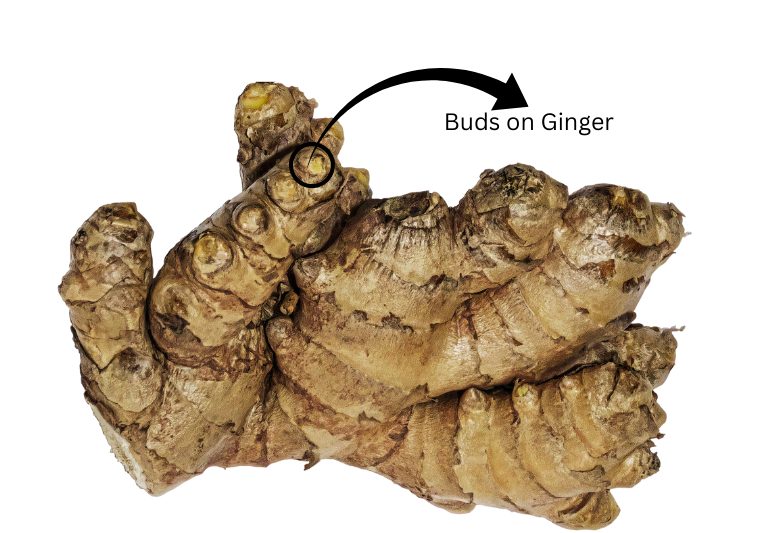
(ii) Cut the ginger rhizome into small portions taking care that each portion contains a bud or eye.
(iii) Callous the cut portions of the ginger rhizome by letting it dry for a couple of days to prevent rotting.
(iv) Bury the portions in the soil, water the pieces regularly for a few days and observe what happens.
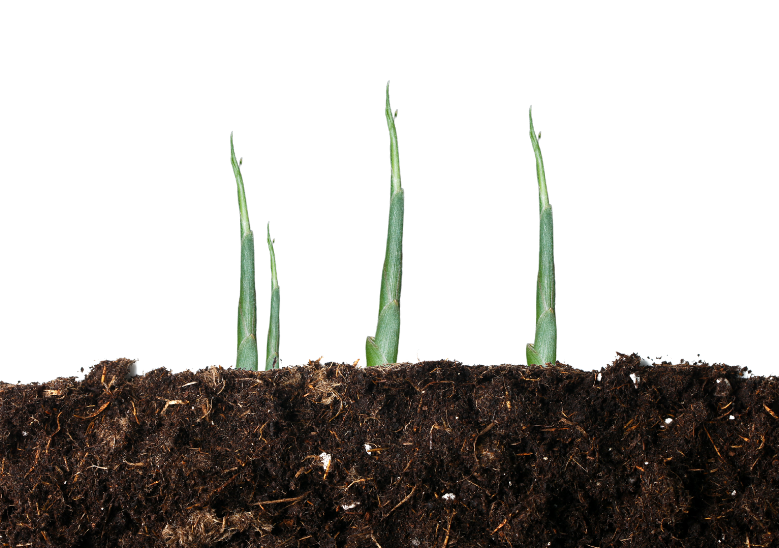
Observation: In 2 – 4 weeks,you should see sprouts appearing from the cut pieces buried under the soil as shown above.
Conclusion: New ginger plants can be grown asexually using vegetative propagation using the ginger rhizome itself. New shoots and roots develop from the buds or eyes of the ginger rhizome.
Turmeric
Aim: To observe if new turmeric plants can be grown from the “eyes” of a parent turmeric plant.
Materials Required: Turmeric rhizome, soil, water.
Procedure:
(i) Select a fresh turmeric rhizome with well-developed buds or “eyes” as shown in the figure.
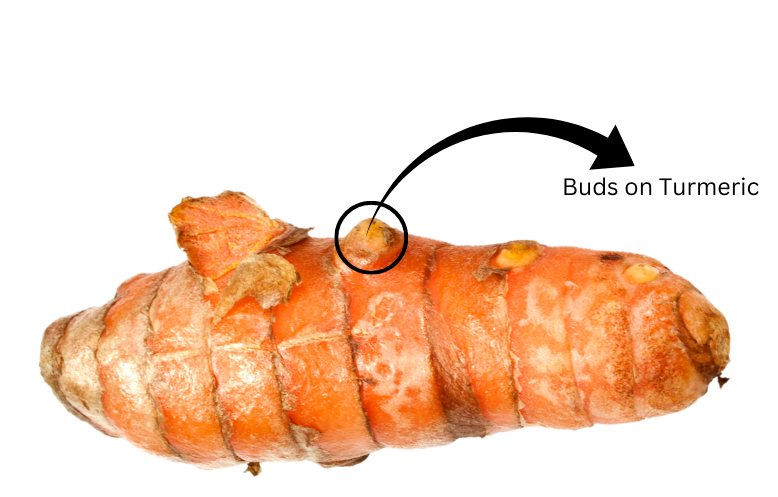
(ii) Cut the turmeric rhizome into small portions taking care that each portion contains a bud or eye.
(iii) Callous the cut portions of the turmeric rhizome by letting it dry for a couple of days to prevent rotting.
(iv) Bury the portions in the soil, water the pieces regularly for a few days and observe what happens.

Observation: In 2 – 4 weeks, you should see sprouts appearing from the cut pieces of turmeric rhizome buried under the soil as shown above.
Conclusion: New turmeric plants can be grown asexually using vegetative propagation using the turmeric rhizome itself. New shoots and roots develop from the buds or eyes of the turmeric rhizome.
“Take a fresh potato. Observe the scars on it with the help of a magnifying glass. You may find bud(s) in them. These scars are also called “eyes”. Cut the potato into small portions, each of an eye and bury them in the soil. Water the pieces regularly for a few days and observe their progress. What do you find? Likewise you can also grow ginger or turmeric.” – Solved.
Related Links:
Solution to Extended Learning Problem 1
Solution to Extended Learning Problem 2
Solution to Extended Learning Problem 3
Solution to Extended Learning Problem 4
Solution to Activity 8.1
Solution to Activity 8.2
Solution to Activity 8.3
Solution to Activity 8.4


